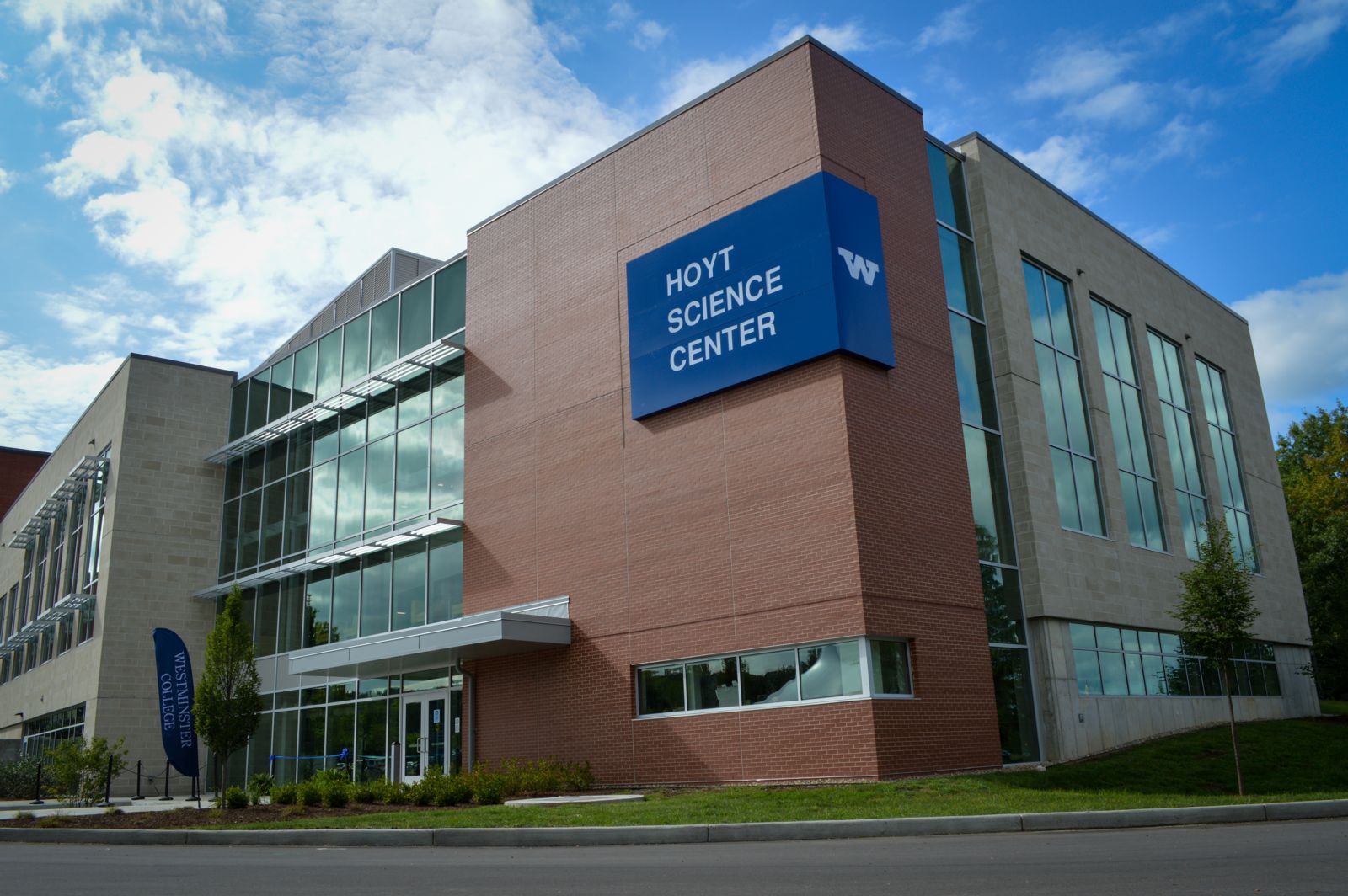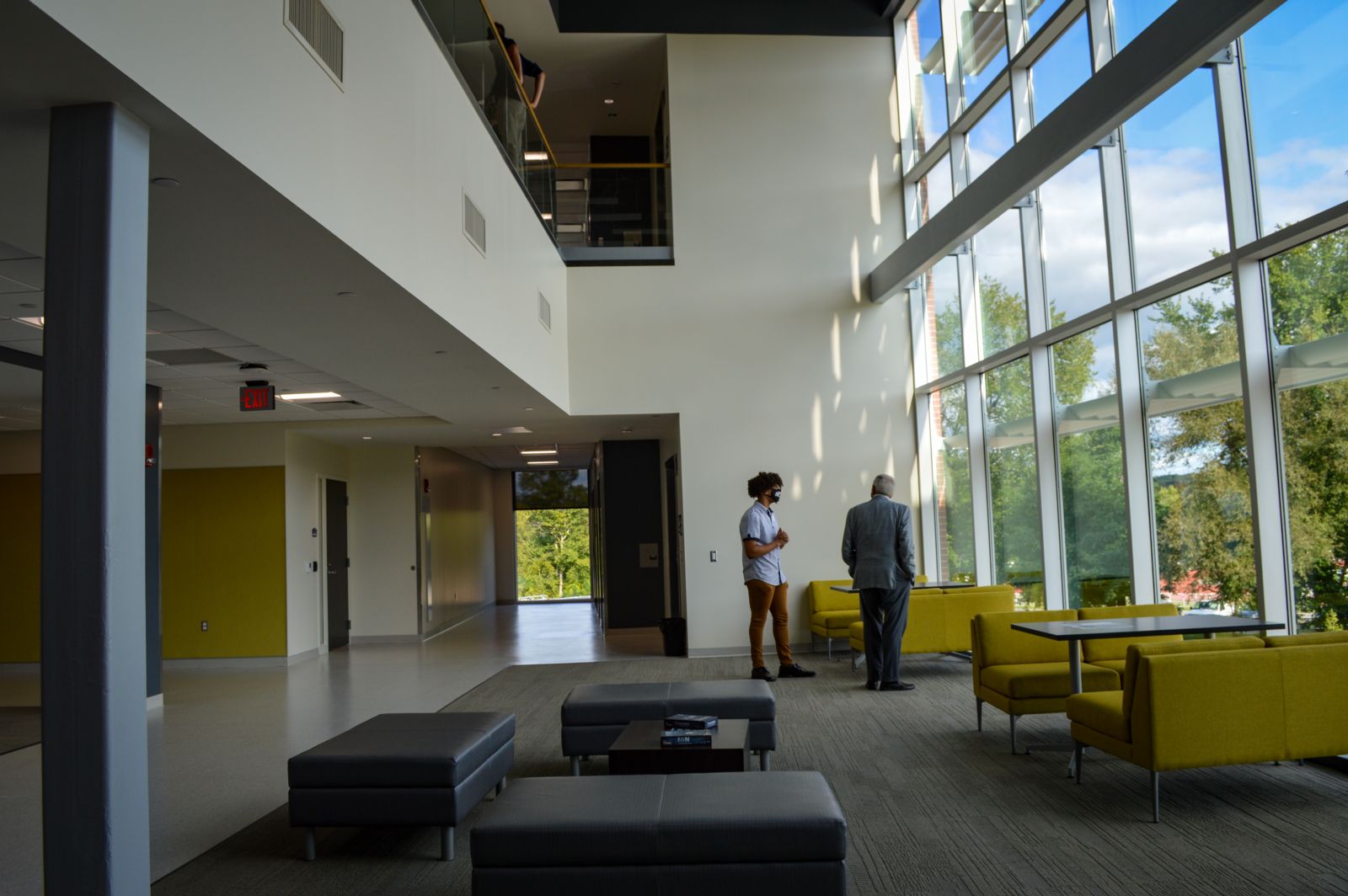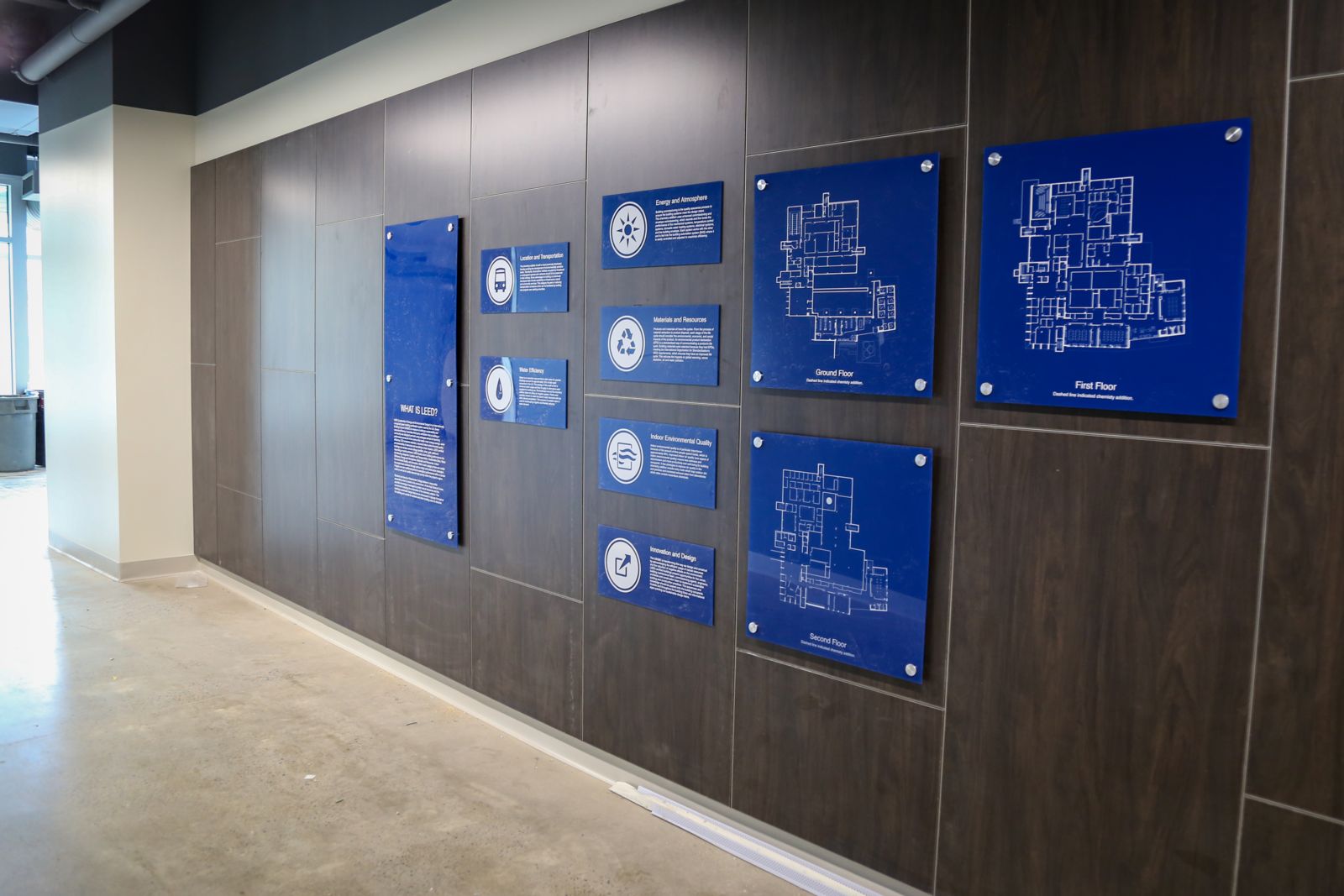Posted on Friday, June 30, 2023
 The three-story laboratory addition to Westminster College’s Hoyt Science Center has been awarded Leadership in Energy and Environmental Design (LEED) v4 certification from the U.S. Green Building Council (USGBC), marking the College’s commitment to environmental sustainability.
The three-story laboratory addition to Westminster College’s Hoyt Science Center has been awarded Leadership in Energy and Environmental Design (LEED) v4 certification from the U.S. Green Building Council (USGBC), marking the College’s commitment to environmental sustainability.
The 27-000-square-foot wing, completed in 2021, is Westminster College’s first LEED-certified building. The LEED rating system was developed by the USGBC to assess and recognize buildings, homes and communities that are designed, constructed, maintained and operated for improved environmental and human-health performance.
According to the Council, LEED-certified buildings save money, improve efficiency, lower carbon emissions and create healthier places for people. To achieve LEED certification, a project earns credit points by adhering to prerequisites and credits that address carbon, energy, water, waste, transportation, materials, health and indoor environmental quality.
The $11.2 million Hoyt Science Center expansion, which concluded phase three of the Hoyt Renovation and Expansion Project, earned sustainable design credits for specific building goals, including:
 • Light pollution reduction credit: Provides the code-required amount of exterior light levels for safety without exceeding required levels. It was important to maintain the natural site environment and view the natural night sky.
• Light pollution reduction credit: Provides the code-required amount of exterior light levels for safety without exceeding required levels. It was important to maintain the natural site environment and view the natural night sky.
• Enhanced commissioning credit: Westminster hired Karpinski Engineering for commissioning. The enhanced commissioning efforts included a technical review of the project drawings for thermal and water integrity at the building envelope; site visits to review mechanical, electrical and plumbing performance; and oversight of building systems equipment manuals and in-person trainings for the College’s maintenance team.
• Quality views credit: This credit was achieved with the installation of many windows, glass and storefront walls. Views to the outside help orient building visitors to their location and emphasize the body’s natural circadian rhythm for an overall result of increased well-being.
With such a broad exposure, the green building education credit purposefully provides signage throughout the addition to explain the sustainable items the user can see and experience.
Additionally, during the construction phase, the project’s general contractor, Thomas Construction Inc. of Grove City, Pa., purchased sustainable building materials, recycled higher than normal volumes of construction waste and implemented a tightly constructed building envelope, allowing for a more energy-efficient structure.
 During the construction process, an indoor air quality management plan was developed and executed to ensure better air quality and minimize air pollutants. After furniture installation, an indoor air quality test was conducted in six locations, checking for carbon monoxide, formaldehyde, total volatile organic compounds (TVOCs), target VOCs and total airborne particulates.
During the construction process, an indoor air quality management plan was developed and executed to ensure better air quality and minimize air pollutants. After furniture installation, an indoor air quality test was conducted in six locations, checking for carbon monoxide, formaldehyde, total volatile organic compounds (TVOCs), target VOCs and total airborne particulates.
“We’re extremely proud of earning LEED certification for the Hoyt addition,” said Kenneth Romig, vice president for finance and management services. “It took many parties to achieve this certification and was most definitely a collaborative effort between our design partners at BDHP Architecture, our construction management team from Thomas Construction Inc., our associates at Karpinski Engineering and Westminster’s Physical Plant staff.”
Designed by Cincinnati-based BHDP Architecture and built by Thomas Construction Inc. of Grove City, Pa.—with Karpinski Engineering serving as the building commissioner—the Hoyt Science Center addition is home to state-of-the-art teaching and research laboratories, offices and spaces for students and faculty to interact and collaborate.